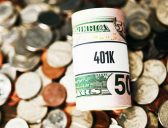An emergency fund is an essential part of making a solid financial plan. This is the money you’ll want to earmark for unexpected events, such as a surprise medical bill, costly car repair or temporary loss of your income.
With so many possible reasons why you’d need to tap an emergency fund, it’s critical to prepare and build a reliable one to avoid letting unexpected expenses lead you down the path to financial ruin.
“By nature, unplanned expenses are unexpected, so the sooner you’re prepared the better off you’ll be when the inevitable happens,” says Greg McBride, CFA, Bankrate chief financial analyst.
Many Americans aren’t prepared for an emergency
Nearly three in 10 (28 percent) Americans don’t have emergency savings. If you don’t have an emergency fund, you’re risking financial disaster. Not being able to pay for emergency expenses could lead to crushing credit card debt or a pile of unpaid bills.
That’s why the best time to start saving for an emergency is before one happens. Saving when things are good will better prepare your finances if things take a turn for the worse. Having a savings account dedicated to an emergency can help make a stressful situation easier to handle.
Eight easy steps to get your emergency fund started
1. Make a budget and see where you can start saving more money.
It’s important to know where your money is going so that you can find saving opportunities. Without budgeting, you won’t be able to maximize income and find ways to reduce or manage your spending. You can use Bankrate’s Home Budget Calculator to set your budget up.
Through careful budgeting, you may find that you need to cut expenses or perhaps increase your income. One way to boost the amount of money you’re taking in could be through a side hustle.
2. Using your budget, make your savings automatic by splitting a portion of your direct deposit into a savings account or money market account.
If you’re putting your hard-earned money into savings, make sure you’re maximizing the interest you’re earning by getting a competitive annual percentage yield (APY). Typically, online savings accounts and money market accounts offer higher yields than brick-and-mortar banks.
If you’re just starting to save, look for an account with a low minimum balance requirement and no monthly fee. Again, online banks typically offer these.
3. Gradually increase the percentage you’re saving or the amount you’re saving, if you’re able to.
This will help you continue to give your savings a boost. If you increase the amount you’re saving, and don’t miss having this money in your checking account, then this increase was probably a good saving move.
4. If you receive a windfall or any sort of cash as a gift, try to put at least a portion of it into your savings account to give your emergency fund a boost.
A tax refund is another example of money that can help grow an emergency account.
5. Plan to cover at least three to six months of emergency expenses.
You’ll determine this number from looking at your budget (from step one) and calculating how much you need each month to cover essential expenses. Rent or mortgage, food and transportation are some of these necessary spending categories.
6. When you reach that goal, keep saving.
If an emergency requires more money than a six-month cushion, you’ll be relieved to have this extra money on hand.
7. Put longer-term savings in a CD.
Calculate whether any of your emergency savings would not be used in the next year.
8. Only do this if, even in the worst-case scenario, you won’t need it during the CD’s term.
Calculate your estimated monthly emergency expenses and multiply this number by 12.
Consider boosting your returns on any excess money with a CD, since this usually earns a little higher APY than a savings account. A CD also typically gives you a fixed APY for the term, unlike a savings yield which is usually variable. Money that won’t be used beyond a year could also be put into a Roth IRA.
How much to save in your emergency fund
Make small goals at first, such as saving $1,000, and then work your way up to a reserve to cover several months’ worth of expenses. While your savings goal will depend on your income and expenses, a general rule of thumb is to save enough to cover three to six months’ worth of expenses.
When setting your savings goal, you should focus on having enough to cover expenses, not on replacing your entire income, says Kevin Gallegos, vice president at Freedom Debt Relief.
“Remember, in an emergency, we don’t fund vacations, fancy new clothes, dining out or other luxuries,” Gallegos says.
Your emergency savings account should be able to cover six months’ worth of expenses, McBride says. For a lot of people, accumulating that amount of emergency savings is going to take some time.
“That’s a destination, not a starting point,” McBride says. “… But the important thing is, if you’re saving consistently, you’re putting yourself on the pathway to get there eventually.”
A sole breadwinner, a business owner or a person with a highly variable income might want to aim for nine or 12 months’ worth of expenses in their emergency savings account, McBride says.
Where to keep your emergency fund
Your emergency fund should be easily accessible, but not so easily accessible that you’ll be tempted to make withdrawals for everyday spending.
Online banks are good locations for your emergency savings because you can’t just walk into the bank and withdraw your cash. Consider keeping emergency funds in a combination of locations, including an online savings account, money market account and short-term CDs.
Since the Federal Reserve paused on rate hikes this year, after nine rate increases from 2015-2018, short-term CDs have become a smart money move for savers. After three Fed rate decreases in 2019 (July, September and October), most top-yielding savings deposit accounts APYs have decreased. But those who locked in a short-term CD before rates decreased, were unaffected by savings and CD APY cuts.
To maximize your returns, you’ll want to consider keeping your emergency fund in a high-yielding account. The higher the APY, the more your savings account will earn. Online banks also typically offer higher yields than brick-and-mortar banks. Compare rates on Bankrate to find the right account for you.
But sometimes there’s more to choosing a bank than than just the rate. In these instances, you can compare these features using Bankrate’s bank reviews to find the right bank for you.
Try and determine how quickly you may need these funds in an emergency and how you would be able to transfer, withdraw or use these funds.
Since you might be forced to use an emergency savings account as a transactional account in an emergency, a money market account can be a good option here – assuming the APY is competitive with the top savings accounts available. But there’s nothing wrong with having your emergency funds in a savings account either, since there should be a fairly easy way to get those funds moved into a transaction account, if needed.
The post How to start (and build) an emergency fund appeared first on Bankrate and is written by Matthew Goldberg
Original source: Bankrate






